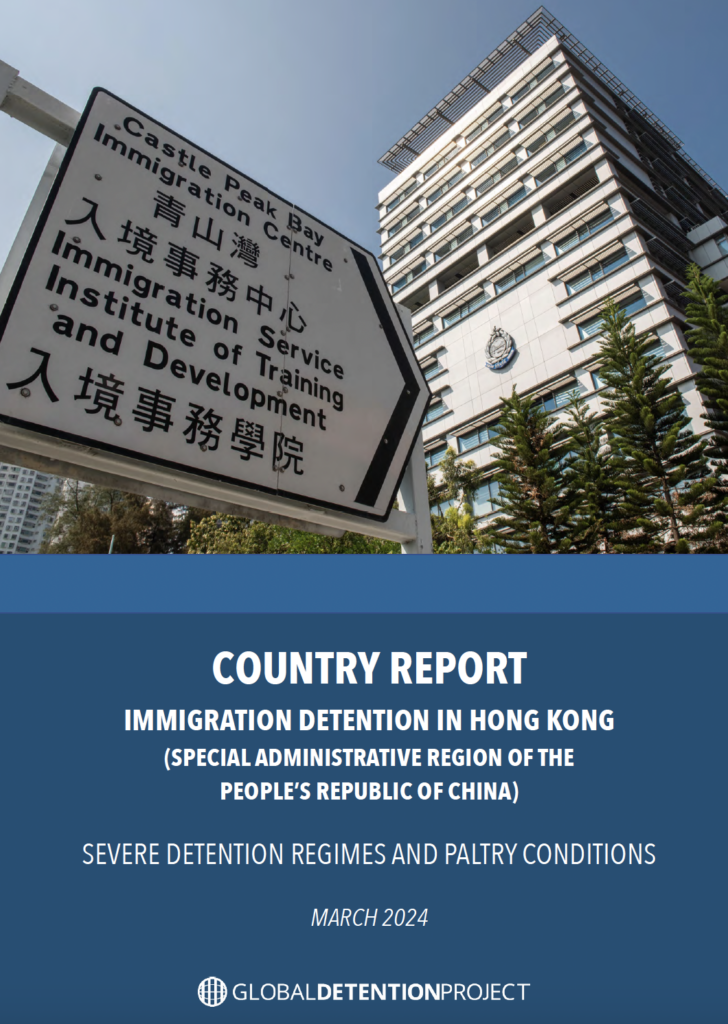March 2024: Hong Kong has long played a critical role in addressing migration and refugee challenges in Southeast Asia, dating back to the 1970s when it served as a primary destination for thousands of Vietnamese “boat people.” Since China assumed control of the Hong Kong “Special Administrative Region” in 1997, its immigration policies have been shaped by often competing trends, including a need for migrant labour and tensions over increasing migration flows from mainland China and neighbouring countries in Southeast Asia. Although the use of immigration detention has remained comparably low since the onset of the COVID-19 pandemic, detention remains a key immigration enforcement measure even as many of Hong Kong’s detention centres have been criticised for their poor conditions and complaints of mistreatment.
KEY FINDINGS
- Although immigration detention numbers have fallen since the COVID-19 health crisis, in the years preceding the pandemic the use of detention remained steadily high, with generally more than 10,000 orders annually.
- Hong Kong SAR operates four main dedicated detention facilities: Castle Peak Bay Detention Centre, Ma Tau Kok Detention Centre, Nei Kwu Correctional Institution, and Tai Tam Gap Correctional Institution. Immigration detainees can also be kept in prisons, police stations, hospital custodial wards, and juvenile centres.
- Migrants detained in Nei Kwu and Tai Tam Gap correctional facilities are under the authority of the Correctional Services Department and are governed under the Prison Rules.
- There is no maximum length of administrative migration-related detention; criminal prosecution of certain immigration offences can lead to prison sentences of up to three years.
- Vulnerable groups, including children and victims of trafficking, are not protected from detention.
- Although the Refugee Convention is not applied in Hong Kong SAR, non-nationals can apply for non-refoulement protection—but only after they have overstayed their visa, creating a situation of “enforced illegality.”
- In 2020, the government introduced important amendments to the Immigration Ordinance, including affirming administrative detention powers, authorising the use of weapons by immigration officers, and accelerating the removal of failed non-refoulement claimants even in cases where the applicant appeals the decision.
- Detainees, NGOs, and politicians have criticised detention centres for inadequate conditions and alleged mistreatment of detainees.
- Hong Kong has a detention monitoring procedure, the Justice of the Peace (JP) system, allowing individuals appointed as JPs to visit detention facilities. However, the system has been criticised for leading to punishment of detainees who criticise detention conditions to JPs.
- In 2022, the government introduced changes to its immigration policy, including increasing the maximum length of solitary confinement to from 7 to 28 days and allowing immigration officers to conduct intimate body cavity searches at Castle Peak Bay.
- Key human rights treaties have not been signed by China and extended to Hong Kong–including the Optional Protocol to the Convention against Torture and the Convention on the Protection of the Rights of All Migrant Workers.



